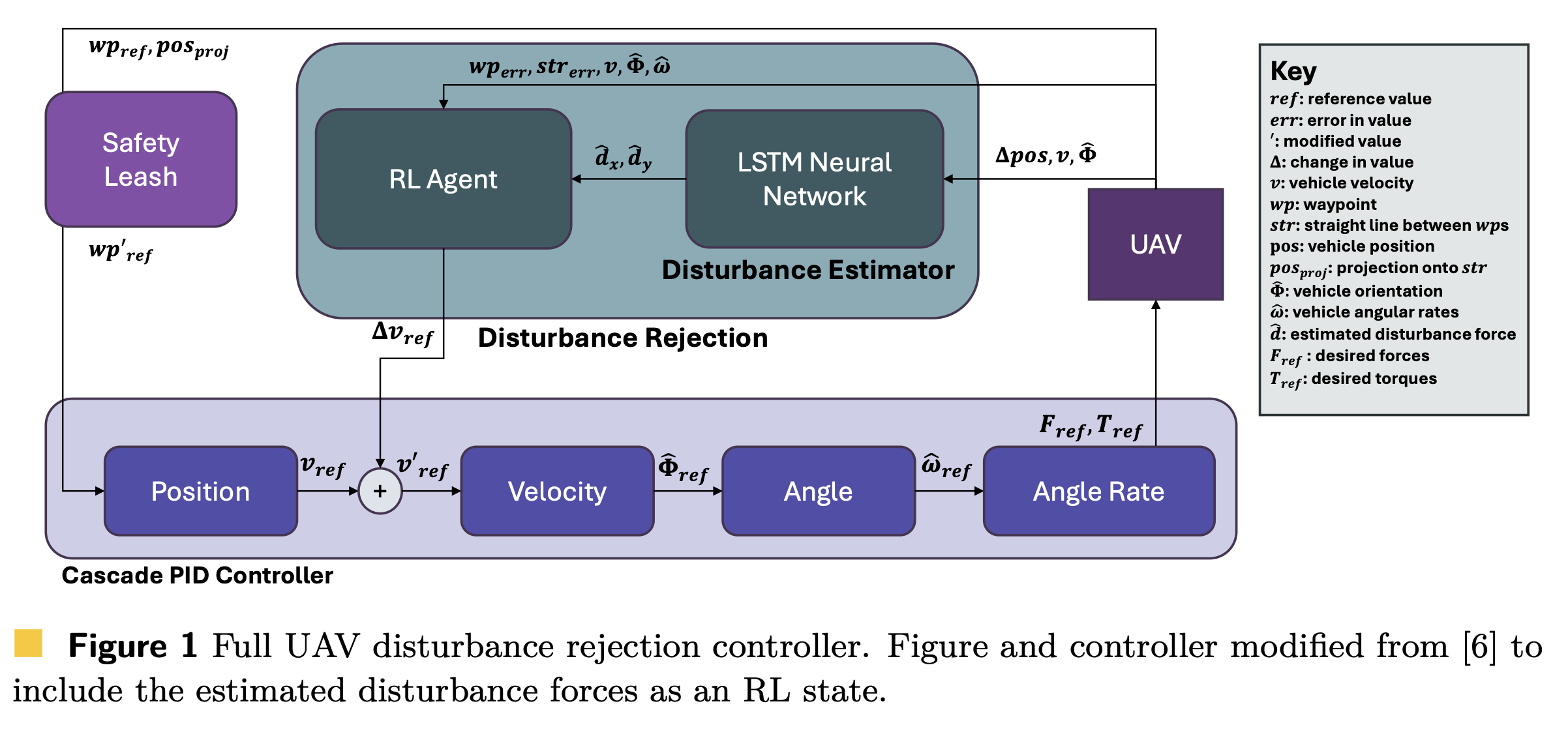Coursey, Austin; Quinones-Grueiro, Marcos; Biswas, Gautam. “Quantifying the Sim-To-Real Gap in UAV Disturbance Rejection.” OpenAccess Series in Informatics, vol. 125, 2024, 16, https://doi.org/10.4230/OASIcs.DX.2024.16.
In many cases, it’s safer and more efficient to develop control systems for drones in simulations rather than the real world, but small differences between the simulation and reality can cause problems when transferring the system to an actual drone. This can reduce how well the system works in real-life conditions. In this study, we looked at how well a drone’s controller, developed using reinforcement learning in a simulation, would transfer to real-world flights.
First, we measured the safety of transferring the controller to real-world flights and found that, although there was a noticeable increase in the deviation of the drone’s flight path (about 100% more deviation in real flights compared to the simulation), the flight was still within safe limits (about 2 meters of deviation from the expected path). Next, we compared the differences between the simulation and real flight data and found that the drone’s orientation (how it was positioned) was quite different. This difference seemed to come from the drone’s real-world behavior of adjusting its position to face the next destination point, something not accounted for in the simulation. We also discovered that the controller was effectively responding to external forces that disturbed the drone’s flight.
Finally, we tested models designed to predict the drone’s movements and found that they highlighted the differences between the simulated and real flights, especially in the way the drone controlled its orientation. In the end, the study offered valuable insights on the challenges of transferring control systems from simulation to real-life use.
